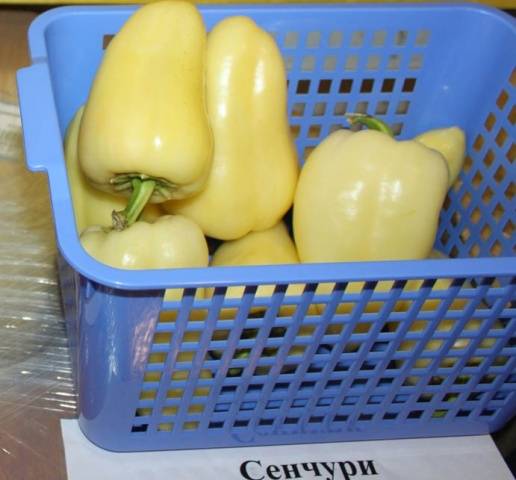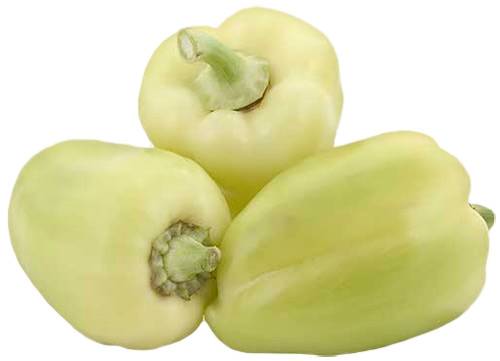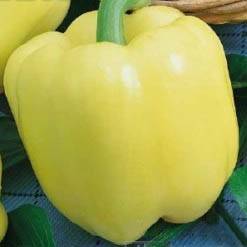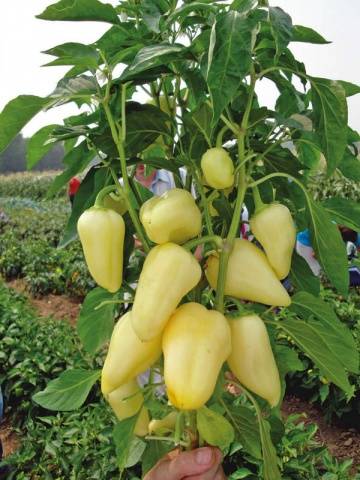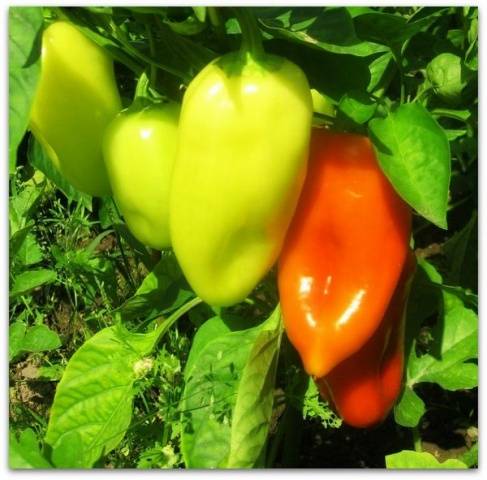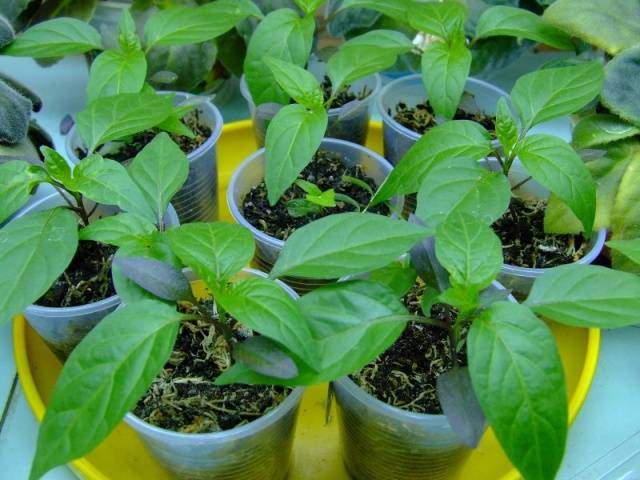Content
There are a number of factors to consider when choosing the right pepper seeds for your garden. Growing conditions play an important role. The yield of plants directly depends on them. It is worth paying attention to the ripening time of the pepper. All fruits have their own purpose. Some gardeners are guided by the appearance of vegetables. They can be of various shades. Next, white pepper will be considered: the names of varieties and growing conditions.
Why it is worth considering the ripening time of pepper
The properties of modern hybrids make it possible to obtain bountiful harvests even in regions of the middle lane. For plants to bear fruit successfully, you need to select seeds with a ripening period suitable for local conditions.
- In the northern regions, it is preferable to take varieties of early peppers. They manage to mature even in a short summer.
- For the southern regions, medium and late ripening varieties are suitable. Plants bear fruit over a long period of time.
Growing pepper seedlings at home is a difficult process, but with proper care, this approach will allow you to get a bountiful harvest. You will need to prepare a suitable container for seedlings, take care of the nutritious soil.
Pepper seeds also need some preparation. Before planting, they are disinfected and tempered. When shoots appear, you will need to monitor sufficient lighting and soil moisture. The soil for the peppers needs to be fed periodically.
After planting, the sprouts are watered abundantly and covered with protective agrofibre. It will prevent the soil from drying out and maintain an optimal microclimate.
White pepper varieties: an overview
The following are varieties and hybrids of pepper that have a white skin color.
White bell
One of the varieties of sweet peppers, the result of a Dutch selection. Initially, the fruit is white, and as it ripens, it becomes creamy or ivory. The plant needs systematic watering and fertilization. It takes 75 to 90 days for the peppers to ripen. Refers to large-fruited varieties.
Century F1
This white pepper is planted outdoors or under cover in the form of a film. The fruit gives a conical shape. At the initial stage of ripening, it is white, later it acquires a red-orange hue. Fruit weight is in the range of 150-180 g.
This Hungarian hybrid is characterized by resistance to heat. Fruiting evenly, can be grown for a long time. The bush is strong, gives a bountiful harvest. Fruit setting continues throughout the season.
Calotte F1
Compact plant with white fruits. Cone-shaped peppers, excellent quality indicators. Refers to early maturing hybrids. Gives quite large peppers: their length is 15 cm, diameter is 9 cm.
Snowwhite F1
At the initial stage, there is a lot of white pepper on the bush; as it ripens, the fruits acquire a red-orange hue. They grow in the form of a cone, slightly elongated. A lot of ovaries are formed on the bush, it itself is small in size. One of the early maturing hybrids.
Star of the East white F1
The plant is vigorous, strong, each bush forms about 8 fruits in the form of a cube, the mass is about 200-250 g. Ripe peppers are white in color with a cream shade.Vegetables are very tasty, do not lose their appearance as a result of transportation. The hybrid resists a number of diseases.
Belozerka
Forms a standard bush with rich foliage. About 7 kg of peppers are obtained from one meter of planting. In technical ripeness, the fruits are white with a slight golden hue; as they ripen, they turn red. Refers to mid-season varieties. You can harvest fruits from 114 days after seed germination. It is known for its high yield.
One white pepper weighs 100 g. Walls are about 6 mm. The shape is conical, the tip is pointed, the surface is slightly ribbed. The plant resists fruit rot, is well stored and transported. Pepper grows large, thick-walled, with a wonderful taste and aroma. It can be stored for a long time and, if necessary, transported over long distances.
Lumina
A very popular variety among gardeners, it bears white fruits with a greenish, pinkish or golden hue. The plant is standard, low. Peppers of medium size, by weight about 100-115 g. The shape is conical, the wall reaches 5-7 mm. The fruit has a light, unobtrusive aroma. The taste is sweetish, watery.
The plant is not too demanding on soil and watering. It can continue to bear fruit, even in dry weather and if the moisture is not too abundant. However, when growing in unfavorable conditions, the fruits acquire a pungent flavor. In general, these vegetables keep well. If the optimum temperature is maintained, they will stay for 3 months without losing their appearance. They can also be transported over long distances.
Ivanhoe
One of the new varieties is early maturing. From the time of emergence to the first fruits, 103-112 days pass. Unripe peppers of white or slightly creamy color, reaching biological maturity after 25 days, turn reddish or orange.
Although the unripe fruits have not yet fully acquired the taste and aroma inherent in this variety, they are already suitable for human consumption. Their weight is 110-130 g. Fruits are cone-shaped, medium in size. Regarding the structure, 3 or 4 sections are highlighted with white walls from the inside, peppers contain a lot of seeds. Walls up to 9 mm.
The plant is semi-stemmed, small in size. No pruning required. Due to their size, it is convenient to harvest the bushes from the bushes. This white pepper is resistant to many diseases. It is preferable to grow peppers in a greenhouse. If you provide the plant with optimal conditions, a square meter of planting will bring up to 7-8 kg of harvest. In fact, the bush can grow in cool or too hot weather. But under such conditions, the yield of the plant is significantly reduced.
What to consider when choosing seeds
Before you buy your favorite bag of seeds, you should carefully read the information on the package. When choosing, you should focus on the following indicators:
- growing conditions;
- ripening period;
- disease resistance;
- external data.
The bag of pepper seeds should indicate where the plant is planted - in a greenhouse or on an open bed. This point is the most important when choosing a variety for your site. The fact is that not every sweet pepper will grow and bear fruit equally in unprotected soil and under cover.
If a gardener chooses a variety for outdoor use, it is important to consider zoning. When summers are short and cool, it is worth looking for plants that are resistant to adverse external conditions. Some peppers continue to bear fruit in both rainy and dry weather.
The period of fruit ripening is no less important.
There are varieties that, with a significant cold snap, can be transplanted into a container and taken home.In indoor conditions, plants continue to bear fruit until winter.
Since peppers have their own viruses and diseases, it is worth choosing varieties that are resistant to diseases. This will save time and money on additional processing of plants with specialized formulations.
How to prepare seedlings
To obtain a bountiful harvest, it is recommended to sow seeds for seedlings in advance. It is worth noting that sometimes the expectation of seedlings can drag on for three weeks. Therefore, many gardeners start sowing in the last days of January.
It is important to consider some of the features of pepper:
- It is a thermophilic plant. The best place to place your pepper seedling pots: a warm windowsill.
- Although the peppers do not tolerate transplanting well, after this procedure the plant recovers and develops the root system intensively. As a result, such plants outstrip the sprouts in development, which have always grown in the same container.
- Pepper does not tolerate outside interference. This means that you should not rearrange the seedlings from one place to another, cut or pinch the plants. When transplanting, be careful not to injure the roots.
The most suitable soil for seedlings is specialized, intended for tomatoes and peppers. Before sowing, it is recommended to place the seeds in a damp cloth for a couple of days. Shoots can be expected for 5-7 days. For disinfection, plants can be spilled with potassium permanganate.
Seedling care and planting in the soil
Growing pepper seedlings at home includes the following steps:
- Transfer... When the plants have three true leaves, they are transplanted into other containers. Seedlings can not be buried, but left in the soil at the root level. In these pots, the plants will remain until they form seven true leaves.
- Watering... This procedure is performed in the morning. A small amount of water is used; with too abundant watering, the plants get sick with black leg and root rot.
- Fertilizer... Be very careful when adding the nutrient to avoid scalding the sprouts. If you create favorable conditions for plant growth, feeding may not be required.
- Preventive measures - loosening the soil, hardening in the sun, weeding.
Pepper seedlings should be planted at the beginning of June, when there is no longer frost. They are placed at a distance of 50 cm between rows, 20-25 cm are left between individual bushes. When choosing a place for peppers, it is worth considering that they need a lot of light. Shading of plants should not be allowed. Also, they are not placed in drafts. The best place is a garden bed on the south side of the house, protected from the wind.
White pepper will be an interesting addition to the color scheme of vegetables. Taking into account the ripening time, the conditions for growing plants and the characteristics of the culture, you can grow a bountiful and useful crop.


